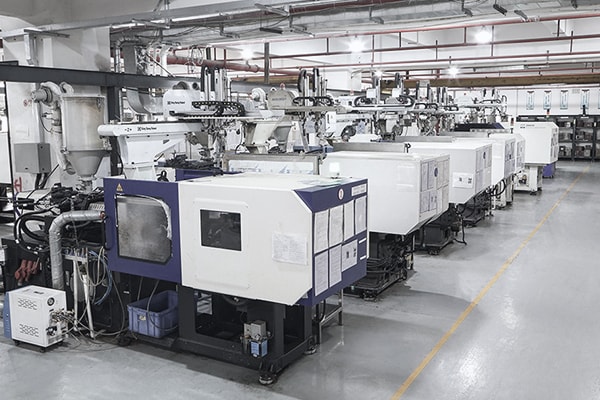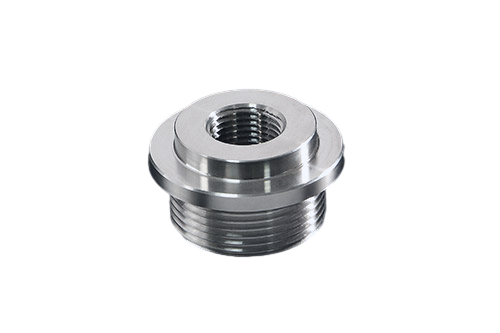Precision CNC Turning Services: Your Complete Guide for Quality Parts
Why Precision CNC Turning is Critical to Modern Manufacturing
In demanding industries such as aerospace, medical devices, automotive, and robotics, there is zero margin for error. High-tolerance bushings, precision shafts, custom couplings, and critical pins require absolute consistency and accuracy. CNC turning services have become the gold standard for efficiently and reliably producing round, symmetrical parts.
This guide covers how CNC turning works, its key advantages (cost, precision), compatible materials (metals and plastics), the step-by-step process, and most importantly—how to choose the right CNC turning partner for your project.
What Is CNC Turning?
CNC turning is a computer-controlled machining process where a stationary cutting tool shapes material that rotates on the lathe's spindle.
It’s a subtractive manufacturing process—material is removed from a rotating workpiece (fixed onto the lathe) to create precise geometries. This method offers unmatched precision, repeatability, and speed for cylindrical parts.
Primary industries served:
- Automotive: drivetrain components
- Aerospace: bushings, fittings
- Medical: implants, instruments
- Robotics: shafts, joints
- Industrial: valves, couplings
Core Technology and How It WorksCore Technology and How It Works
At the heart of CNC turning lies the precision CNC lathe. Unlike manual lathes, CNC machines follow exact digital instructions (G-code)for unrivaled control.
Basic components of a CNC lathe include:
- Spindle: Rotates the workpiece at high speed.
- Chuck/Collet: Holds the material securely on the spindle.
- Turret: Holds multiple cutting tools (inserts, drills, boring bars) and switches them automatically.
- Cutting Tools: Remove material to form the part shape.
- CNC Controller: The “brain” that executes programmed instructions.
- Guideways/Bed: Provide a stable and precise motion platform.
CNC Turning vs. Manual Turning:
CNC turning offers extremely high precision (tight tolerances), consistency (every part is the same), ability to handle complex geometries, and a high degree of automation (faster production, less labor-intensive).Common Parts Produced by CNC Turning
-
Shafts (drive shafts, motor shafts)
-
Bushings and Bearings
-
Pins (dowel pins, locating pins)
-
Couplings and Connectors
-
Flanges and Fittings
-
Custom Nuts and Bolts
-
Valve Assemblies
-
Nozzles and Hydraulic Components

Major Benefits of CNC Turning:
Exceptional Accuracy and Tight Tolerances
CNC turning can achieve tolerances as tight as ±0.0002 inches (0.005 mm), which is critical for aerospace components, medical implants, and high-performance automotive parts.
Outstanding Consistency and Repeatability
Ideal for both prototyping and large-scale production (50 to 50,000+ units), CNC turning ensures every part—from the first to the last—is identical.
Fast Turnaround Times
With automatic tool changers, multi-tool turrets, and optimized programming, CNC turning shortens lead times and reduces per-part setup costs.
Cost-Effective at Scale
Thanks to automation, minimal labor, and reduced material waste, unit costs drop significantly as production volumes increase—making CNC turning perfect for mid- to high-volume runs.
Wide Material Compatibility
CNC turning handles a broad range of materials with efficiency:
-
Metals: Aluminum (6061, 7075), Stainless Steel (303, 304, 316), Steel (1018, 4140), Brass, Copper, Titanium
-
Plastics: Delrin (POM), PTFE (Teflon), Nylon, PEEK, Acrylic
Complex Geometries in One Setup
Live tooling (for milling and drilling on the lathe) and multi-axis lathes (e.g., Y-axis, sub-spindle) allow complex features—threads, grooves, tapers, cross holes, flats—to be machined in a single setup, reducing errors and operations.Reduced Waste, Improved Sustainability
Precise material removal minimizes waste. Efficient programming enhances material utilization and aligns with ESG sustainability goals.
CNC Turning Process: A Step-by-Step Guide from Design to Delivery
Understanding the process helps set clear expectations when working with a CNC turning supplier—and supports better design for manufacturability (DFM).
1. Design & CAD Modeling
-
Your engineers create detailed 2D drawings or 3D CAD models (e.g., SolidWorks, AutoCAD, Fusion 360).
-
Key point: Clearly define all dimensions, GD&T, surface finish, and material specifications.
2. CAM Programming & Toolpath Generation
-
Programmers use CAM software (e.g., Mastercam, GibbsCAM) to convert the CAD model into machine-readable G-code.
-
This step determines tool paths, cutting speeds, feeds, tool selection, and operation order for optimal efficiency and quality.
3. Machine Setup
-
Appropriate fixturing is selected (chucks, collets, jigs) to securely hold the raw material (bar stock, pre-machined blanks).
-
Cutting tools (inserts, drills, boring bars, threading, and grooving tools) are loaded into the turret.
-
Tool offsets and workpiece zero points are set.
4.Machining Operations (Typical Sequence)
-
Facing: Create a smooth reference surface at the end of the part.
-
Rough Turning: Remove most of the material quickly, leaving a small amount for finishing.
-
Finish Turning: Make precise cuts to reach final dimensions and surface finish.
-
Drilling/Boring: Create or refine internal diameters (ID).
-
Threading: Cut internal (tapping) or external threads.
-
Grooving/Cut-off: Machine grooves or separate finished parts from the stock.
-
Knurling/Engraving (optional): Add grip textures or markings.
-
(With live tooling/multi-axis): Mill flats, cross-drill holes, or slot without removing the part from the lathe.
5. In-Process Quality Control
-
Key dimensions are checked during the run using probing or manual measurements (calipers, micrometers), with adjustments made as needed.
6. Final Inspection & Quality Assurance
-
Comprehensive inspection is performed using tools like CMMs, optical comparators, surface roughness testers, and gauge sets.
-
Every spec on the drawing is verified.
-
Results are documented (inspection reports—FAIR/PPAP available upon request).
7. Post-Processing (Optional)
-
Based on part requirements: deburring, polishing, plating (e.g., nickel, zinc), anodizing, heat treatment, and more.
8. Packaging & Delivery
-
Parts are carefully packed to prevent damage during transport and delivery.

CNC Turning Material Selection Guide: Metals and Plastics
Choosing the right CNC turning material is critical—it affects machinability, part performance, cost, and lead times.
Pro Tips for Material Selection:
- Discuss Early: Collaborate with your CNC turning partner during the design phase. They can advise on:
- Machinability: How easy the material is to cut (impacts cost, surface finish, tool wear)
- Cost and Availability: Influences overall part pricing and delivery time
- Thermal Behavior: How the material expands/contracts during machining or use
- Post-Processing Needs: Will it need plating, anodizing, etc.?
- Regulatory Compliance: FDA, USP Class VI, RoHS, REACH, and other standards
Precision CNC turning services are the foundation for producing high-quality, reliable cylindrical components that meet the demanding standards of high-performance industries. Understanding the process, advantages, material selection, and—critically—the right manufacturing partner empowers you to make informed decisions and achieve optimal results for your project, whether it's a mission-critical prototype or a high-volume production run.

